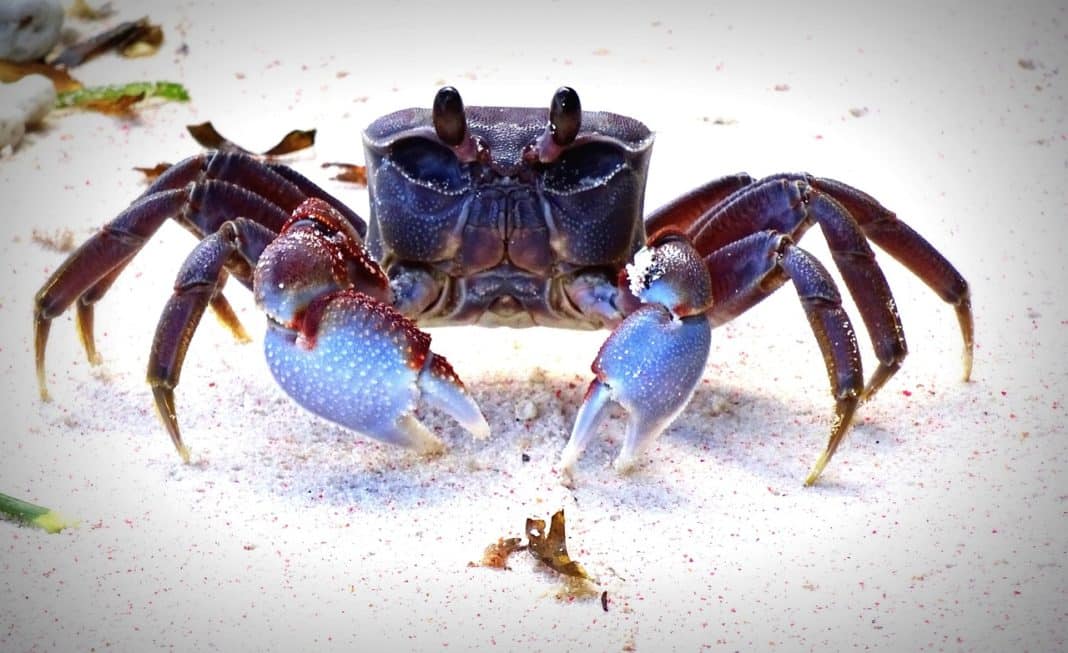The blue crab, Callinectes sapidus, is an invasive species, first detected in the area in 2015, and has since been threatening the ecosystem through the spread, and although it does have natural predators in the wild, including the octopus, the imbalance caused partly by overfishing has become a threat to the environment, but these feared crustaceans might be able to provide the answer to the cause of the catastrophic destruction of the Mar Menor.
A team of researchers from the Spanish Institute of Oceanography (IEO-CSIC) believed that the use of a sentinel species to evaluate the impact of chemical and microplastic pollution on Mediterranean organisms and ecosystems invaded by this large crustacean with a voracious appetite that feeds on small fish and other crustaceans could provide answers to the destruction of the natural environment blamed, mostly, on the human developments in the area. Researchers from the IEO-CSIC, in collaboration with staff from the University of Murcia and the University of Aveiro (Portugal), have started the first phase of the CrabMedpol project, whose field work will be carried out in the Mar Menor.
“Over the last decade, the blue crab has rapidly invaded Mediterranean coastal environments and has become a keystone species, seriously threatening native biodiversity in ecosystems. Its growing presence has led to a significant alteration of the ecological balance and of the fishing and aquaculture industry in coastal lagoons and river estuaries,” explains the IEO-CSIC.
To control and mitigate its environmental and socioeconomic impacts, several management strategies are currently being explored, including commercial fishing for human consumption. However, “due to its ecological characteristics, its omnivorous and strongly predatory character, the blue crab is highly exposed to chemical pollutants and microplastics in the coastal areas where it lives, since in most cases these are ecosystems impacted by human activity, which could have implications for its use as a resource,” explains Begoña Pérez, project researcher. “But, on the other hand, these characteristics of the species also offer opportunities for animal, public and environmental health research,” she adds.
This species was recorded for the first time in Spain in 2004, recalls the Spanish Institute of Oceanography, and its abundance increased exponentially between 2017 and 2021. Numerous and growing populations have been documented established along the Spanish coast, such as the Parque Natural del Ebro Delta, the Albufera of Valencia, the Santa Pola-El Hondo Salt Flats, the Balearic Islands and the Mar Menor.
“In CrabMedpol, different chemical and biological indicators will be examined and validated at different levels of biological organisation in the blue crab, from proteomics to behavioural biomarkers, to provide information on the bioaccumulation and impact of environmental contaminants, including micro and nanoplastics, on the health of these organisms,” details the scientific team.
The project, which will last three years, consists of three phases: a first for development and validation of procedures; a second that includes two laboratory experiments called microcosm studies; and an environmental analysis in the Mar Menor coastal lagoon as a case study.
Marine crustaceans, including crabs, occupy particular ecological niches in ecosystems and may be more sensitive to emerging pesticides than fish or bivalves. “The reason is that phylogenetically they are closer to insects and other terrestrial arthropods, to which most pesticides are directed, than other groups of organisms,” explains Pilar Gómez, researcher at the University of Murcia and scientific co-leader of the CrabMedpol project.
“We hope that the project will have a significant impact on scientific knowledge and awareness about the interactions between invasive species, marine pollution, environmental health and food security,” explains Concepción Martínez-Gómez, researcher at the Murcia Oceanographic Centre of the IEO-CSIC and responsible for the project. “In addition, the results could influence the use of emerging insecticides, providing better monitoring options in ecosystems invaded by blue crab.”
The CrabMedpol project, funded by the State Research Agency, is being developed by an interdisciplinary group of expert researchers in marine pollution and ecotoxicology belonging to the Marine Pollution Research Group of the IEO-CSIC, from the Toxicology and Zoology areas of the University of Murcia and the Centre for Environmental and Marine Studies of the University of Aveiro.





